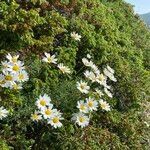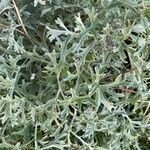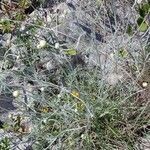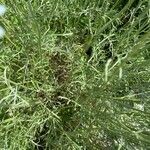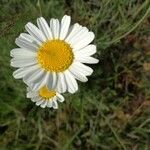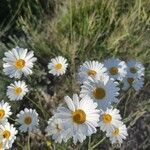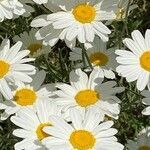Herbs, perennial; stems 17-60 cm tall, solitary or fascicled, unbranched or branched from base, pubescent with appressed T-shaped or furcate hairs. Basal leaves: petiole 10-20 cm; leaf blade ovate or elliptic, 1.5-4 × 1-2 cm, both surfaces silvery grayish, appressed pubescent with T-shaped and furcate hairs, 2-pinnatisect; primary segments 3-5-paired; ultimate segments linear or oblong-ovate, margin entire or few dentate. Lower and middle leaves similar, large, shortly petiolate. Capitula apically solitary or 3-10 in apical lax corymb. Involucre cup-shaped, 1.2-1.5 cm in diam.; phyllaries in 4 rows, abaxially pubescent especially in outer ones, outer ones lanceolate, ca. 4 mm, middle and inner ones lanceolate to broadly linear, 5-6 mm, margin narrowly white scarious. Ray florets white; lamina 1.2-1.5 cm, apex truncate or emarginate. Achenes 2.5-3.5 mm. Corona 0.8-1.5 mm, margin shallowly lobed. Fl. and fr. May-Aug. 2n = 18*, 24, 27, 29, 31, 34, 36.
More
A herb. It keeps growing from year to year. It grows 17-60 cm tall. It has flattened T shape hairs. The leaves at the base are 2-4 cm long by 1-2 cm wide. They have a long stalk.
Pending. A brief description is provided by Richardson et al. (2016: 181).
Cultivated in some parts of the world, including Tasmania, to obtain pyrethrum, a natural insecticide.
More
The flowering parts are used for tea.
